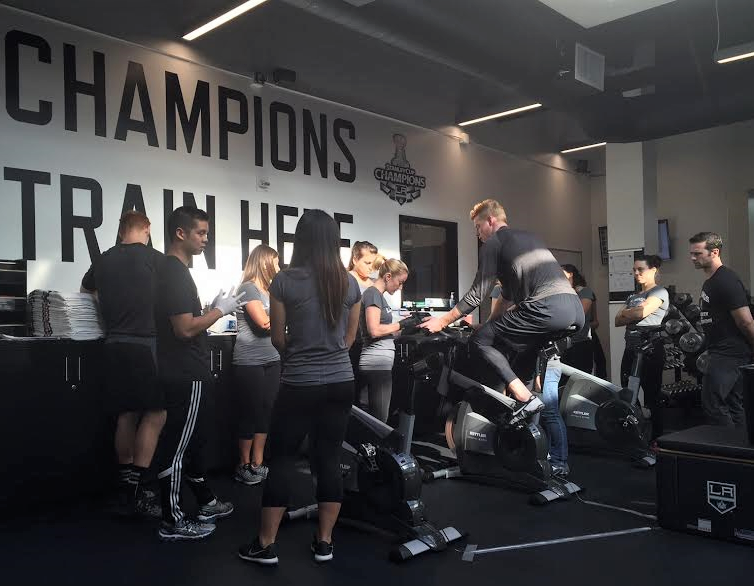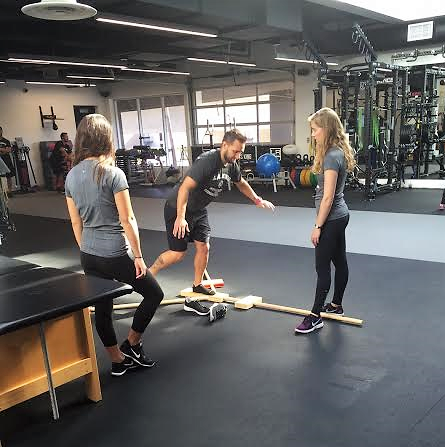Kinesiology students learn from the hockey pros
Fists flying. Bodies checked into the boards. A scrum for the puck creating chaos on the ice. On the outside, hockey appears to be simply a large group of large players on skates fighting to score, fighting to win and sometimes just fighting.
But look a little deeper and hockey is a refined science that requires today’s players to have exceptional timing, on-point quickness, snap reaction timing and the right rest and diet. For the past two seasons, the Los Angeles Kings of the National Hockey League, have employed a group of Cal State Long Beach kinesiology students to fine-tune the players’ games.

The 25 students, selected by CSULB professor Joshua Cotter, spent two days before the season at the Kings’ facility, taking blood samples while players rode stationary bikes or measuring their jumping skills and entering them into a database.
Strength and conditioning guru Matt Price then studies the computer analyzes to improve the playing level. He said the students’ help is invaluable because the data helps the Kings determine a player’s weaknesses and gives them information on how to improve their game.
“A year ago, when we were looking for help to facilitate our testing and evaluation, for me, it was important that we had a group that was obviously highly-regarded and well positioned in their field to execute the help and direct the students,” Price said.
That led him to Google, where he searched for a local university with a highly-regarded kinesiology department. He reached out to Cotter, who quickly agreed to help.
“The students are clearly well-prepared,” Price said. “Dr. Cotter spends a lot of time with them running through our protocol and the expectation around the integrity of what we’re doing and the professionalism of what we expect is clear. So they come in very prepared and do an unbelievable job.”
Cotter, who did similar work as a graduate student at Ohio State, said the students not only count push-ups and measure vertical jumps, they gather data on how the players’ actions translate into their performance on the ice.

“We still do a vertical jump, but instead of seeing how high they jump, we use something called a ‘force plate.’ It’s a piece of equipment that allows us to see how much force is produced at the level of the foot that comes into play on the force plates,” Cotter said. “We get a whole idea of what happens in their vertical jump, from their right leg to their left leg and how quickly they are able to push themselves off the plate.”
Photos courtesy of LA Kings PR






